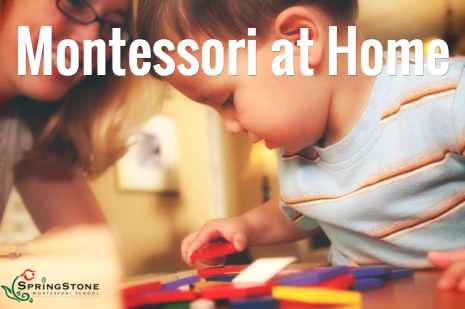Valentine’s Day in the Montessori Environment: Lessons in Grace and Courtesy

Each year in February, we celebrate the people we hold dear to our heart, and we want to spread that love all year through. So for this newsletter, I would like to spend a little extra time on the special Grace and Courtesy lessons that are a part of every Montessori classroom.
Love… it’s a complicated emotion. We can love our child, our partner, or our pet. We can love pizza, the smell of rain, or cheering for our favorite football team. We can love a good book, a walk along the beach, or sleeping in on Saturday mornings. How then, do we teach a child to love?
Agape and Valentine’s Day: Lessons in Grace and Courtesy
Agape is a selfless love, whereby we give of ourselves to others, seeking nothing in return. We can see this type of love when tiny hands bring us a bouquet of crushed dandelions or when toddlers kiss and pat a crying infant. They give freely of themselves to nurture and care for others, to bring other’s closer to their own inner joy.
Valentine’s Day is a wonderful time to focus on agape and what it means to serve others. Making and sharing Valentine’s cards is one tradition that children enjoy. It’s fun to give and receive “mail”! And young children will spend a lot of time choosing the exact card for each person.
Even at a young age, they understand the importance of making a personal connection.
We can broaden our sense of a loving community by sharing a meal or a snack. Sitting down and sharing a meal is a powerful expression of inclusion and friendship in all cultures. Sharing food, serving others before we are served, ensuring there is enough to go around, and making a special food that all will enjoy are selfless acts that put the needs of others before our own.
We can prepare for a special Valentine’s Day celebration by presenting lessons on serving food, pouring tea, arranging flowers, and even greeting guests. All of these lessons help children develop compassion and empathy for others.
Older children can expand on this idea by preparing a special Valentine’s Day treat for others. For example, they could bake cookies or cupcakes to share with people in assisted living facilities. They could also prepare skits, songs, or poetry readings as a way of sharing their time and talents with others.
In a world that so often focuses on the self, we should cultivate opportunities for children to develop agape so they can live and fulfill Montessori’s cosmic plan, “in which all, consciously or unconsciously, serve the Great Purpose of life.” (Montessori, To Educate the Human Potential)
I am leaving you with a special section of the amazing book by Maria Montessori, ‘The Absorbent Mind’:
“Whenever we touch the child, we touch love. It is a difficult love to define; we all feel it, but no one can describe its roots or evaluate the immense consequences, which flow from it, or gather up its potency for union between men…. Love, like that which we feel for the child, must exist potentially between man and man, because human unity does exist, and there is no unity without love.” — Maria Montessori The Absorbent Mind, p. 263-264

